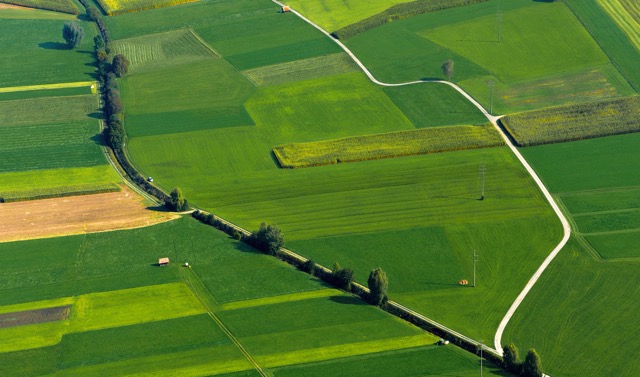How Generative AI Can Actually Work in Ag: A Field-Level View on What’s Possible—and What’s Not
Subscribe to get insights and updates.
Agriculture and technology news combined.Generative AI is changing how industries think about knowledge access, automation, and user experience. In agriculture, though, the stakes are different. Field conditions vary, data is fragmented, and frontline users still trust human expertise over digital. For GenAI to succeed here, it has to be more than impressive—it has to be useful.
This article outlines where GenAI can meaningfully support agricultural product teams, how to avoid common pitfalls, and what’s needed to build systems that add value without adding noise.
Solve the Right Problem
In AgTech, generative models are best suited for enabling better access to existing knowledge—not generating new agronomic insights.
Some of the most relevant and realistic applications include:
- Advisory bots trained on proprietary product documentation, offering frontline teams fast access to usage protocols, compatibility rules, or safety guidelines.
- Compliance support tools that summarize regulatory requirements or generate audit-ready responses using internal playbooks and past documentation.
- Internal assistants for customer support or sales teams navigating complex service catalogs.
These use cases share two traits: the information already exists, and the challenge is surfacing it effectively. This is where Generative AI, especially when paired with Retrieval-Augmented Generation (RAG), excels.
Make GenAI Invisible
In agriculture, the most effective technology is often the least visible. GenAI solutions shouldn’t feel like a new app—they should feel like a faster, more helpful version of what users already do. That means minimizing workflow change and embedding into everyday tools and channels.
Most agronomic decisions happen over WhatsApp, voice notes, and face-to-face conversations. GenAI systems should be designed to parse and respond to these natural communication formats. Instead of expecting users to learn a new interface, design AI to work in the background: enriching CRM notes, summarizing conversations, or pre-populating follow-ups.
Where possible, use voice or lightweight interfaces that deliver insights without friction.
RAG: The Right Starting Point for GenAI in Ag
Instead of depending only on what the model 'knows' from training, Retrieval-Augmented Generation (RAG) supplements it with real-time access to proprietary documents (e.g., PDFs, manuals, technical bulletins) to generate answers.
This method is especially powerful in AgTech, where much of the domain knowledge is buried in documentation. Here are a few use case examples to consider:
- A regulatory assistant that scans internal compliance records to draft responses aligned with regional laws.
- A crop yield support tool that synthesizes scouting data, preprocessed recent climate patterns, and agronomic history into usable insights.
- A digital guide for field representatives that delivers contextual answers from product manuals in real time.
RAG offers the structure and transparency needed in agriculture, where precision, traceability, and source attribution matter.
Fit the Workflow, Don’t Fight It
GenAI adoption isn’t just a technical challenge—it’s a behavioral one. Farmers, agronomists, and support teams have established rhythms. They don’t want to change systems. GenAI must adapt to them.
Design for:
- Minimal onboarding. If a tool takes hours to train, it won’t be used.
- Seamless integration. GenAI should auto-summarize calls, parse field reports, or prep visit logs—not demand form-filling or new workflows.
- Context-aware support. Translate real-time context—like field notes, recent activity, or product usage—into helpful insights, delivered right when they're needed.
Build for Trust, Not Just Output
Generative AI shouldn’t try to replace agronomists. It should help them work faster and smarter. The best use cases:
- Surface critical information from internal systems without requiring searches.
- Explain patterns or anomalies, and the steps needed to address them, in a clear way.
- Free up human capacity from repetitive admin so more time is spent on value-added work.
By designing for augmentation, not automation, you reduce risk and build confidence.
Watch the Ground Truth: Infrastructure and Data
Even the best-designed GenAI fails if the environment can’t support it. In many rural regions, bandwidth is limited. GenAI systems must be light on compute, capable of offline usage, or optimized for intermittent sync.
Data remains expensive and uneven. Be prepared to handle fragmented, semi-structured inputs—and don’t rely on pristine formats. Good solutions accept data as it is, not as we wish it were.
Organizational Readiness Is Just as Critical
AI initiatives require more than engineers. Success depends on:
- Cross-functional teams: product, legal, compliance, field ops
- Clear governance and auditability
- Commercial strategy to align AI with business value
Magoya’s engagements prioritize readiness as much as architecture.
Building GenAI to Respect the Realities of Ag
Generative AI can improve speed, clarity, and accessibility in agricultural tools—but only if it’s built around real tasks, not theoretical capabilities. The best starting point is a narrow, high-value use case, supported by curated content and measured through user feedback.
At Magoya, we design GenAI systems that respect the realities of agriculture: variable conditions, decentralized teams, and the high cost of confusion. We don’t overbuild. We prototype fast, adapt to your data, and focus on results users can trust.
Because in this field, useful always beats flashy.


.png)


